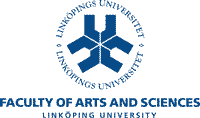
|
Visa svensk kursplan |
|
COURSE CATEGORY Fristående kurs MAIN FIELD OF STUDY Övriga ämnen - ÖÄA SUBJECT AREA Other interdisciplinary Studies – TV9 |
COURSE CODE | 754G52 |
- define and discuss the concept ”Culture” in relation to the content of the course
- present and compare some cultural expressions and relate these to the concept of identity
- define and explain the concepts of material and immaterial cultural expressions
- motivate and argue how experiential learning and outdoor methods, could be applied in a field chosen by the student
- use aesthetic representations in a presentation
- apply a scientific approach when writing course exams
Students visit and examine urban and rural surrounding areas. Outdoor education and learning methods as well as aesthetic methods are presented and applied as a means of learning. The student’s own experiences from the course form the basis for reflection and processing of the course content.
The following subject areas are covered by the course:
Culture and cultural heritage; identity creation; Art, craft and design in the Nordic countries; literature and music from the Nordic countries – primarily from Sweden; some Nordic artists, musicians and film-makers; Immaterial culture such as popular belief and fairy tales; Traditions and festivals a cooking as way of getting to know a specific culture.
Students failing an exam covering either the entire course or part of the course two times are entitled to have a new examiner appointed for the reexamination.
Students who have passed an examination may not retake it in order to improve their grades.
At least one year of full-time undergraduate studies.
Documented knowledge of English equivalent to Engelska B/Engelska 6: internationally recognized test, e.g. TOEFL (minimum scores: Paper based 575 + TWE-score 4.5, and internet based 90), IELTS, academic (minimum score Overall band 6.5 and no band under 5.5), or equivalent.
The course is carried out in such a way that both men´s and women´s experience and knowledge is made visible and developed.
|
||||||||||||||||||||||||||||||||||||||||||||||||||||||||||||||||||||||||||||||